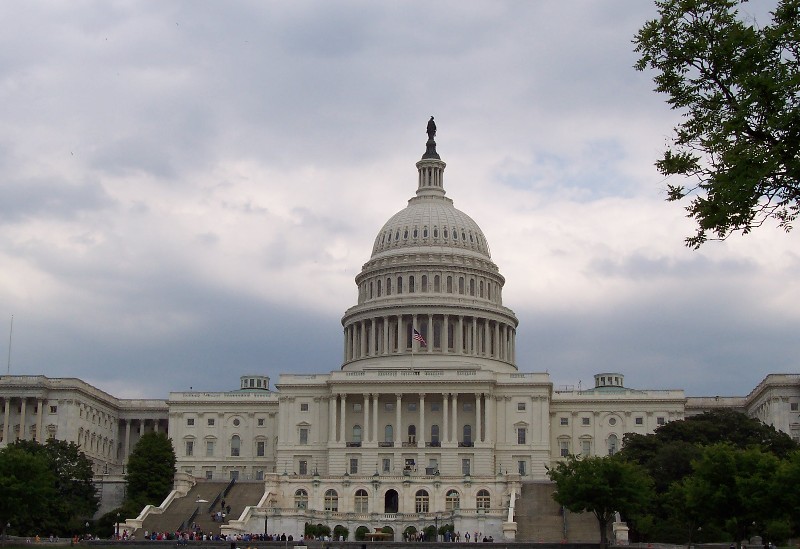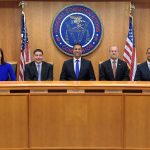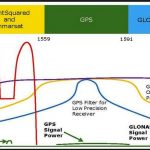The federal government is rumored to be nearing a decision about Ligado Networks’ request to repurpose its satellite frequencies to also support a ground-based telecom network. Those frequencies neighbor the band used by GPS. Testing done both several years ago and more recently has shown such a system could seriously interfere with GPS receivers.
Most federal agencies rely on GPS to support their missions using it for things like mapping, earthquake prediction, animal studies, environmental assessments and emerging capabilities like positive train control, which can prevent accidents. There are also new industries such as drones and driverless cars that require accurate, reliable GPS and the majority of the nation’s critical infrastructure — everything from the internet and cell towers to the power grid and the stock exchanges — needs its exceptionally accurate timing data. Most of that infrastructure is reliant on, or becoming reliant on, GPS.
The Ligado issue, according to sources, is pitting the agencies needing GPS against federal spectrum managers on the hunt for bandwidth to address surging demand from commercial users. Those sources also say that the Air Force has been crystal clear on its opposition to Ligado’s proposal but the top echelons of the Defense Department, specifically the Office of the Chief Information Officer, has not. DoD’s pro-GPS stance was essential to putting the original network plan on hold in 2012. That plan was proposed by Ligado’s predecessor LightSquared. They filed bankruptcy after the plan was set aside, emerging in 2015 with a modified proposal and, soon thereafter, a new name.
As of press time the issue was expected to come up at the March 22 meeting of the federal government’s top coordinating and policy body for navigation and timing — the National Executive Committee for Space-Based Positioning, Navigation, and Timing (the PNT EXCOM). Earlier meetings had to be canceled so this was to be the first EXCOM of the Trump administration with some officials perhaps weighing the issue for the first time.
Sources tell Inside GNSS that the members of the EXCOM seemed poised to take the next step — which would likely be the launch of an interagency team to develop an official position. That position would then be sent to the National Telecommunications and Information Administration (NTIA), which represents government interests in spectrum decisions. The NTIA would then submit the letter along with its own recommendations to the FCC. All of this could be completed by the end of April 2018, said one expert familiar with the issue.
Gap Analysis
With so much at stake a virtual nor’easter of new reports and filings hit Washington in early March. One of the most important is an interagency technical analysis of five interference studies that was released just a week ahead of the meeting.
Called the Gap Analysis, the assessment was done by the EXCOM’s panel of technical experts, the National Space-Based PNT Systems Engineering Forum (NPEF). The interagency group mirrors the EXCOM in that it draws its expertise from more than a dozen agencies, can add experts as needed, and is chaired by the Departments of Defense and Transportation.
The NPEF was asked to evaluate the methodologies used in the five tests, which all looked at interference issues raised by having a terrestrial LTE network operating in the frequencies neighboring the GPS L1 signal. The NPEF was told to base its work on the recommendations of the EXCOM’s other panel of top satellite navigation experts, the Space-Based PNT Advisory Board (PNTAB). )
That’s important because the PNTAB measures interference using the internationally accepted 1 dB degradation Interference Protection Criterion (IPC) — that is a one-decibel (1 dB) degradation in C/N0, the carrier-tonoise power density ratio. Ligado has been seeking to redefine the yardstick to a more favorable method: a change in positioning and timing accuracy.
1) Federal Communication Commission (FCC)-mandated Technical Working Group (TWG)
2) National Space-Based PNT Systems Engineering Forum (NPEF)
3) Department of Transportation (DoT) Adjacent Band Compatibility (ABC)
4) Roberson and Associates (RAA)
5) National Advanced Spectrum and Communications Test Network (NASCTN)
The NPEF also was to determine if there were any unanswered questions or untested conditions that would hinder the GPS community from determining the “maximum aggregate power level of out-of-band transmissions to ensure that the existing and evolving uses of space-based PNT services are not affected.”
Tests 1 and 2, which were done in 2011, showed there was debilitating interference to GPS receivers from the telecom network as it was designed at the time by Ligado’s predecessor firm, LightSquared. The results of these tests contributed to an FCC decision to set the LightSquared plan aside.
The final report on the third test, the Adjacent Band Compatibility Assessment (ABC study), has yet to be released. There were preliminary results presented in 2017 and the NPEF appears to have had access to either these or the final report.
“While the exact values vary by receiver category and LTE network architecture and the resulting aggregate power,” wrote the Gap Analysis authors, “the test results indicate that the maximum tolerable EIRP of interference sources in the frequency bands adjacent to GPS are in the milliwatt or microwatt range.”
The NPEF found there is sufficient data to assess the risk of using frequencies near the GPS band for a groundbased communications network. While there were also some research gaps, that is questions that would be valuable to have answered, the study team also concluded that the data from the three government tests — when used in combination — was sufficient and appropriate to determine the maximum tolerable aggregate power level of transmissions in the band adjacent to GPS L1.
As for the Ligado-sponsored tests, the NPEF acknowledged the effort that went into them but determined that their scope and framework were insufficient when evaluated against the minimum criteria. Also noted in the back of the report was the fact that the studies had limited to no input from the public or from GPS experts.
Garmin Weighs In
Ligado has been going to great lengths to put a positive spin on its tests and its settlements with different GPS receiver
manufacturers — suggesting, for example, that the deals with the five receiver firms indicate that the interference problems have really been addressed.
Garmin, it seems, disagrees.
In a letter filed March 19, the GPS receiver manufacturer stated that, while it “has long supported the domestic development of new broadband service;” it believes that “broadband development generally should not come at the expense or harm to the nation’s well functioning, innovative, and economically important global positioning service (GPS).”
The company said that in its legal settlement with Ligado it agreed not to object to proposals regarding its noncertified aviation and general location / navigation lines of business — provided that certain technical parameters were met. The firm, however, had reserved the right to comment on issues related to certified aviation and its deal with Ligado did not constitute an endorsement by Garmin of Ligado’s proposal.
Garmin also said that the two companies had not reached an agreement about the 1 dB Interference criterion as
an appropriate metric to evaluate interference. Moreover, in previous filings, Garmin has made clear that it supports the 1 dB standard and disagrees with Ligado’s approach.
The NPEF underscored that the 1 dB standard is the right approach. Going forward they strongly recommended that decisions impacting the GPS radio frequency environment be informed by data from tests aligned with the PNTAB’s set of minimum criteria,
including the 1 dB standard, and that full consideration be given to the potential operational, scientific, and economic impacts.
Taking Out the Spin
The NPEF assessment goes a long way toward sorting out the various tests and judging their usefulness. The NASCTN test for example — the second one to be sponsored by Ligado — was actually a reasonable effort to design a test methodology, and was never intended to be an interference test.
Ligado, however, has repeatedly claimed that the NASCTN data was supportive of their assertion that GPS receivers could exist along side Ligado’s revised network.
When pressed by the PNT Advisory Board during their November 2017 meeting Ligado’s Executive Vice President and Chief Legal Officer Valerie Green said that she agreed that interference testing was not the “specific intent” of the NASCTN effort.
“They did in fact develop a test methodology which, I happen to think is great and they did in fact do it (the testing),” said Green. “And as a result of that there was, in fact, data, which our engineers interpreted. That’s what engineers do with data.” It was that interpretation, she indicated, that supported the assertion that GPS operators and Ligado could coexist.
Where’s the ABC Test?
One of the real questions raised by the NPEF study, however, is the whereabouts of the ABC Assessment. The research is completed and, as of March 2017, it was supposed to be through interagency coordination and be published by May 2017.
Now, nearly a year later, experts following the issue are wondering if it is being “slow-rolled” to keep it from being factored into the Ligado spectrum decision.
“The Adjacent Band Compatibility Report is expected to be posted to the USDOT Office of Positioning, Navigation and Timing and Spectrum Management website in the coming weeks,” said a DoT spokesperson. That could put it outside the window of consideration if the EXCOM, NTIA and FCC complete their parts in a month as suggested.
The filing of the NPEF test into the docket may help prevent the ABC Assessment from being ignored. The Resilient Navigation and Timing Foundation posted the report to the FCC docket — forcing it to be addressed by the FCC as it weighs its decision.
Also seemingly missing is mention of the Air Force testing of military receivers, which was being done in conjunction with the ABC research. Though the results may be classified, the fact that such a report is being done is public knowledge, so it seems odd that it does not come up.
“The Air Force will have a separate report on the sensitivities of the military receivers,” an Air Force representative told the March 30, 2017 public workshop on the ABC Assessment. “It will be classified at the appropriate level but it will be available to federal government stakeholders that need that information,” he said, noting that he had already been tasked by GPS Program Director Col. Stephen Whitney.
Patent Emerges
In addition to the NPEF Gap Analysis the RNT Foundation also located and posted to the docket a patent that
appears to support an accusation of fraud made in a $2 billion lawsuit over how one of Ligado’s predecessor firms handled data on interference.
Phil Falcone’s Harbinger Capital sued Apollo Global Management and others for concealing the results of tests done in
2001 that showed that voice and data signals in the band neighboring GPS would cause interference to GPS receivers.
In the patent application submitted by Gary Churan, the director of systems analysis at Mobile Satellite Ventures
LP (or MSV), Churan described testing using frequencies in the 1459-1559 MHz band.
Inside GNSS asked a signal expert to look at the application to see if it did indeed reflect interference to GPS receivers from telecom signals in the band neighboring GPS.
The testing described in the patent missed some subtleties, said the expert, who asked to speak anonymously, but “it was a good first effort and it showed some (interference) problems.”
A spokesperson for Apollo Global Management in a written statementmade shortly after the lawsuit was filedsaid: “We believe the suit lacks merit and we intend to defend ourselves vigorously.”
Technology has changed since that testing was done and Ligado has lowered its planned signal power and said it no longer intends to use the problematic frequencies from 1545 to 1559 MHz — but that’s not really the issue, suggested satellite industry expert Tim Farrar.
“I think if the allegations made that the original license was based on fraudulent conduct, and the FCC decides to look into that issue, then it will be very hard, while that was ongoing, for them to grant a modification to the license,” said Farrar, who has closely followed the LightSquared/Ligado debate.
Interestingly, in February, the suit was put on hold until the end of the year. The preliminary conference is now scheduled for January 2, 2019.
Such a long stay is unusual said Farrar. “You can get extensions of a few weeks but you don’t get extensions of nine months. So it would imply that something has happened.”
The real question, Farrar said, is why Harbinger would agree to delay its case?
Other experts following the Ligado- GPS issue suggested the delay could be connected to Ligado — specifically that the case was put on hold so as not to undermine prospects for approval.
Farrar agreed that was a possibility — but said there were many other possibilities.
“For example they (Apollo) could have showed Harbinger what they planned to file, which might have made all sorts of accusations against what Harbinger did too,” he said, underscoring that the idea was strictly speculation on his part. “They (Harbinger) might have thought better of it.”






